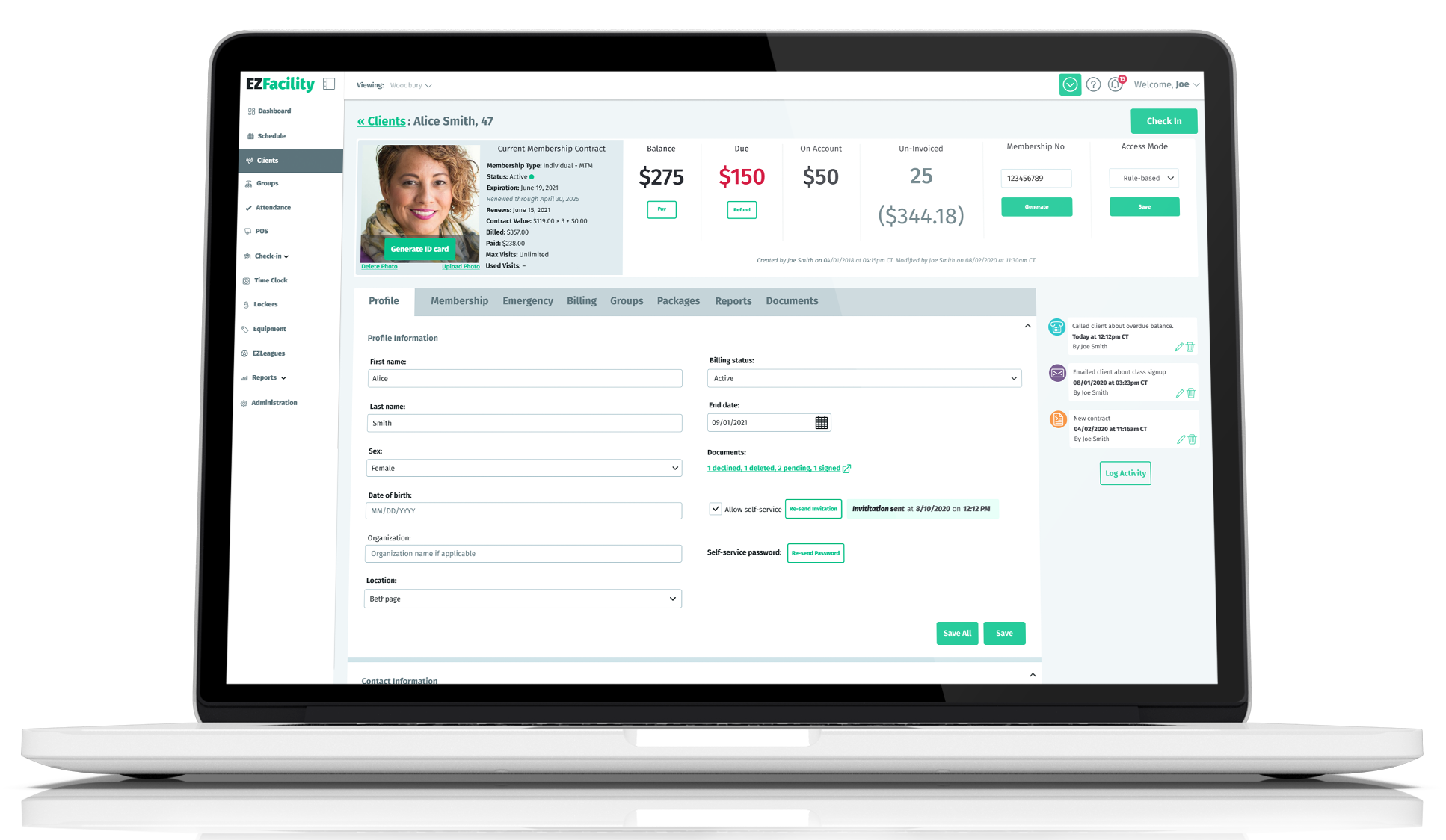Whether you run your own personal training business or work at a fitness facility, the ultimate goal is to build a roster of loyal, engaged clients. The online fitness market is booming, but there are a lot of other fitness businesses and personal trainers vying for the attention of your current and prospective clients.
So, what can you do to break through the noise and stand out?
In this blog, we’ll cover five tried-and-true marketing strategies to help you attract more prospective clients to your personal training business.
1. Leverage social media
Utilising social media is the fastest, cheapest and easiest way for personal trainers to reach their target audiences and potential clients. It also allows fitness businesses to control the narrative by deciding what content to share and when.
Here are five social media marketing tips to keep in mind:
- If you’re just starting out, it’s best to pick just one or two social media platforms to focus on so you can maximise your marketing efforts.
- When it comes to social media marketing, consistency is key. To build an engaged following you need to be in constant communication with your followers.
- Focus on creating and sharing content that’s relevant, of interest, and will resonate with your target audience to keep them coming back to your social media pages for more. Even better—try to identify a niche or a need you can fill.
- The communication on social media goes both ways, and followers don’t just want to be talked to—they want to be listened to. In addition to sharing regular and compelling content on your pages, make sure you interact with your audience as well.
2. Participate in local events
Most places host health fairs or other fitness-related expos several times throughout the year, creating the perfect targeted marketing opportunity for your personal training business. Setting up a booth at these types of events is a great way to introduce potential clients to your personal brand, and face-to-face conversations give you a greater ability to sell yourself and build relationships.
If you bring free swag to hand out, you’ll likely attract even more people to your booth—and it’s a great opportunity to snap some pictures to post to your social media accounts, too.
3. Highlight customer reviews & testimonials
Did you know that 92% of consumers will hesitate to buy a product if there are no reviews left by customers? And 97% of consumers say the customer reviews they read influence their purchasing decisions?
If you haven’t already done so, it’s time to create a testimonial marketing plan. Your online presence is more important today than it’s ever been, and not only do potential clients want to see what others are saying about your personal brand—they expect it. So much so, that 92% of consumers say they’ll hesitate to buy a product if there are no reviews left by customers.
The great news is—72% of customers say they’ll provide reviews and testimonials simply if a local business asks them to! With the right marketing efforts in place, you can easily beef up your online presence by garnering more online reviews and customer testimonials.
4. Incentivise referrals
Countless statistics show that the majority of us are influenced by what others say—for example, 83% of customers say word of mouth recommendations from friends or family members make them more likely to purchase that product or service, and 41% say they trust a recommendation from someone they know more than a social media recommendation.
Given the power of peer persuasion, rewarding your clients for referring friends to your personal training business is a win-win. Not only will this benefit your business by introducing new potential revenue streams, it will also create a more fun and meaningful member experience.
You can structure a refer-a-friend campaign a number of different ways. A few ideas include offering a discount on personal training services, a free session for a certain number of referrals, or giving away free branded swag.
5. Enhance the member experience
Providing a great member experience is critical to creating a positive association with your personal brand, establishing credibility, and building a robust network of personal training clients. The experience you provide—whether positive or negative—will stay with you and impact your long-term success.
Today’s consumers are more empowered than ever, making it that much more important for you to differentiate your personal training business from competitors, and to consistently deliver an exceptional experience that no one else can.
Conclusion
One silver lining of the pandemic is society’s heightened awareness of the importance of exercise to maintaining total body health. This has created a lot of new opportunities, especially in the digital fitness space, meaning the climate is ripe for personal trainers who are able to effectively utilise marketing efforts to connect, engage and build long-lasting relationships with clients.
To learn how we can help streamline your personal training business so you have more time to connect with potential clients, click here to schedule a free personalised product tour.









